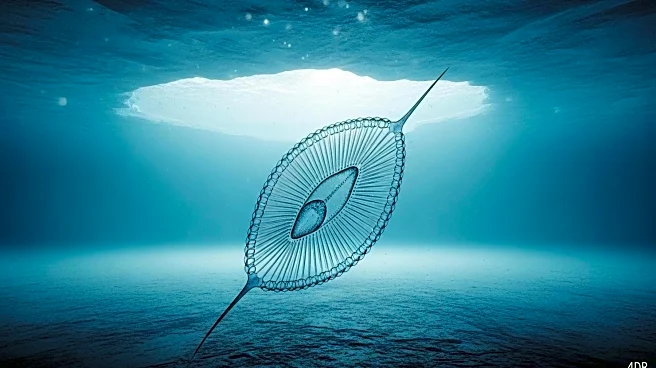What's Happening?
New research from Stanford University has revealed that diatoms, single-celled algae found in Arctic ice, are not only surviving but actively moving at temperatures as low as -15°C. This discovery, published in the Proceedings of the National Academy of Sciences, challenges previous assumptions about the limits of life in extreme conditions. The diatoms glide using a combination of mucus and molecular motors, a mechanism that allows them to navigate microfluidic channels in the ice. This research was conducted during a 45-day Arctic expedition, where samples were collected and analyzed using specialized microscopes.
Why It's Important?
The findings about Arctic diatoms have significant implications for understanding life in extreme environments and the potential for adaptation to changing climates. The ability of these organisms to remain active at such low temperatures suggests that they could play a crucial role in the Arctic ecosystem, influencing nutrient cycles and food webs. This research also raises questions about the resilience of life in the face of environmental changes, providing insights that could inform studies on climate change and its impact on polar regions.
Beyond the Headlines
The study of Arctic diatoms highlights the importance of preserving polar research capabilities, especially in light of potential budget cuts to scientific funding. Understanding the unique adaptations of these organisms could lead to broader discoveries about life's resilience and the interconnectedness of ecosystems. The research also emphasizes the need for continued exploration and study of the Arctic, as changes in this region could have far-reaching effects on global climate patterns.











